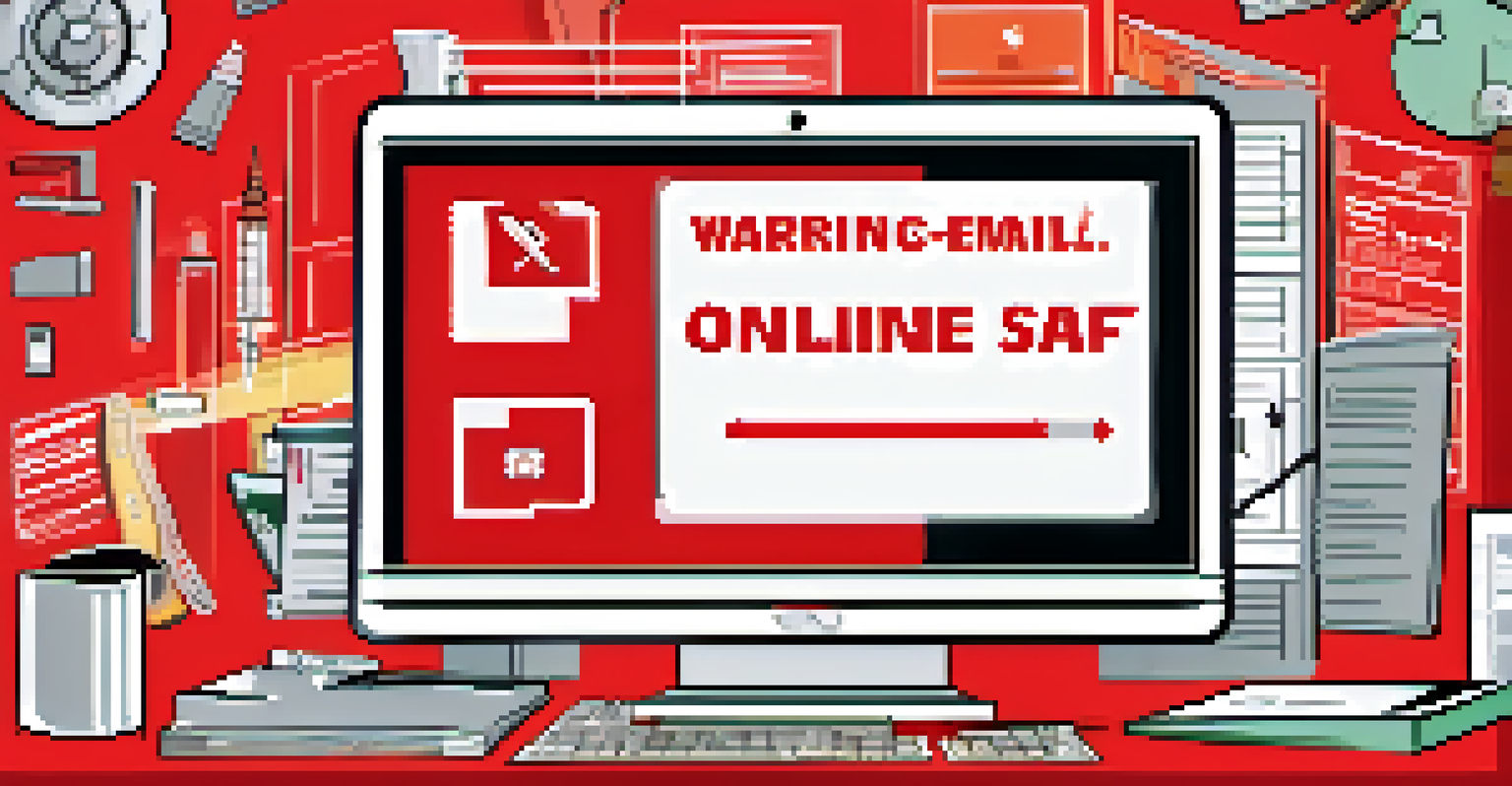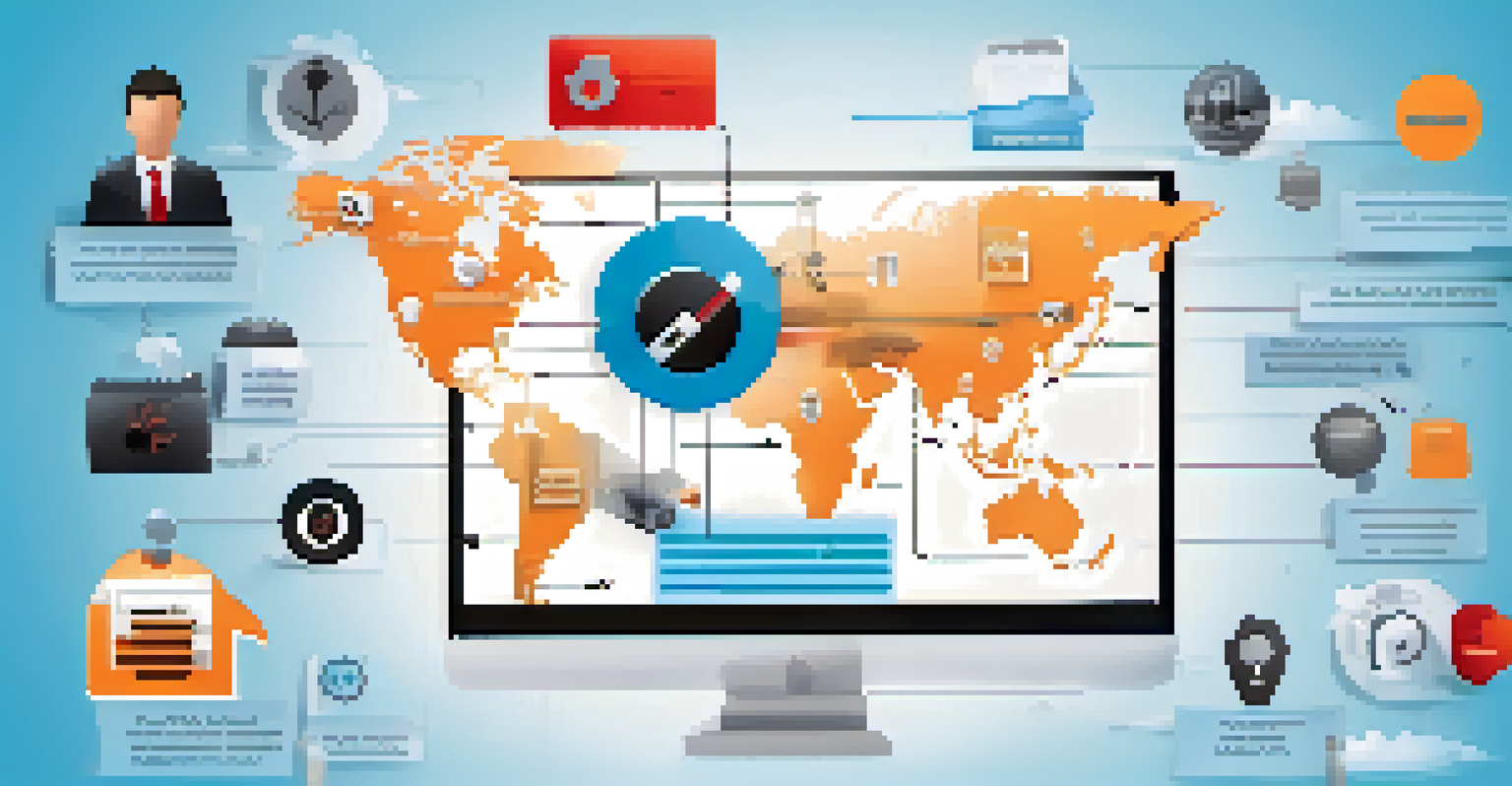Recognizing Online Threats: A Guide for Digital Citizens

Understanding the Digital Landscape and Its Risks
In today's interconnected world, the digital landscape is vast and ever-evolving. As we navigate through various online platforms, it's crucial to understand that not everything is safe. From social media to online banking, each interaction poses potential risks that can affect our personal information and security.
The greatest risk is not taking one.
One of the key challenges is recognizing the difference between benign and malicious activities. Cyber threats can range from simple spam emails to sophisticated phishing schemes that trick you into giving away sensitive information. By being aware of these risks, you can better protect yourself and your digital footprint.
As digital citizens, we must cultivate a mindset of vigilance. This means staying informed about the latest threats and understanding that our online behavior can have real-world consequences. Just like we lock our doors at home, we need to secure our virtual spaces.
Common Types of Online Threats You Should Know
Online threats come in various shapes and sizes, each with its own tactics and objectives. For instance, phishing attacks are designed to deceive users into providing personal information by mimicking legitimate sources. This can happen through emails or fake websites that look strikingly real.

Another prevalent threat is malware, which refers to malicious software that can infect your devices, leading to data theft or system damage. Ransomware, a type of malware, encrypts your files and demands payment to unlock them, often causing significant distress and financial loss.
Understand Digital Threats
Recognizing and understanding various online threats, such as phishing and malware, is essential for protecting your personal information.
Lastly, don’t underestimate the power of social engineering, where attackers manipulate individuals into divulging confidential information. This can happen in many ways, including phone calls or social media interactions. Understanding these threats is the first step in protecting yourself.
Signs of Phishing: How to Spot the Red Flags
Phishing is one of the most common online scams, and recognizing its signs can save you from falling victim. Look out for suspicious emails that create a sense of urgency, urging you to click on a link or provide personal information quickly. These messages often contain poor grammar or awkward phrasing, which can be a strong indicator of a scam.
Security is not a product, but a process.
Another red flag is the sender's email address. If it looks strange or doesn’t match the organization it claims to represent, proceed with caution. Genuine companies usually use their official domain names, so any discrepancies should raise alarms.
Lastly, be wary of links and attachments. Hover over links to see the actual URL before clicking, and avoid downloading attachments from unknown sources. When in doubt, it's always safer to visit the official website directly instead of following a link.
Safeguarding Your Personal Information Online
Protecting your personal information is crucial in today's digital age. One effective strategy is to use strong, unique passwords for each of your online accounts. This minimizes the risk of one compromised password leading to multiple breaches. Consider using a password manager to keep track of them securely.
Additionally, enable two-factor authentication (2FA) whenever possible. This adds an extra layer of security by requiring a second form of verification, such as a text message code or an authentication app, making it harder for unauthorized users to gain access.
Use Strong Security Measures
Implementing strong passwords, two-factor authentication, and antivirus software significantly enhances your online security.
Regularly reviewing your privacy settings on social media platforms can also help safeguard your information. Adjust these settings to limit who can see your posts and personal details, ensuring that your online presence remains as private as you desire.
The Role of Antivirus Software in Protecting You
Antivirus software plays a pivotal role in defending your devices against malicious attacks. These programs scan for, detect, and remove malware before it can cause harm. With regular updates, they stay ahead of emerging threats, providing you with peace of mind while browsing the internet.
However, it’s important to remember that antivirus software is not a panacea. While it significantly reduces the risk of infections, it’s still essential to practice safe browsing habits and be vigilant about the links you click and the sites you visit.
Consider setting your antivirus software to perform regular scans and updates automatically. This ensures that your protection is always up to date, allowing you to focus on enjoying your online experiences without constantly worrying about potential threats.
Recognizing the Importance of Secure Connections
Using secure connections is another vital aspect of online safety. When accessing sensitive information, always look for 'HTTPS' in the URL, indicating that the connection is encrypted. This means that the data exchanged between your browser and the website is secure from eavesdropping.
Public Wi-Fi networks, while convenient, can be breeding grounds for cybercriminals. If you must use public Wi-Fi, avoid accessing sensitive accounts or consider using a Virtual Private Network (VPN) to encrypt your internet traffic, adding an extra layer of protection.
Stay Informed on Cyber Risks
Regularly updating your knowledge about the latest online threats and sharing this information with others can help create a safer digital environment.
Remember, your online security is only as strong as the connections you use. By prioritizing secure websites and connections, you’re taking proactive steps to protect your sensitive information from prying eyes.
Staying Informed About the Latest Online Threats
In the ever-changing digital landscape, staying informed about the latest online threats is essential. Follow cybersecurity blogs, subscribe to newsletters, or join online forums focused on digital safety. This continuous learning will help you recognize emerging threats and adapt your online behavior accordingly.
Moreover, many organizations and cybersecurity experts regularly publish reports on trending scams and threats. Keeping an eye on these updates can alert you to potential dangers that may not be on your radar yet, allowing you to take preventive measures.

Engaging with your community about online safety is also beneficial. Sharing experiences and knowledge with friends and family helps create a more informed digital society, where everyone can recognize and combat online threats together.